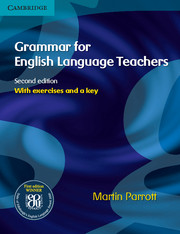16 - The present perfect
Published online by Cambridge University Press: 09 February 2023
Summary
Key considerations
Many learners find it difficult to think of the present perfect as a form that can refer to present time in some contexts, and past time in others. This is a particular problem for speakers of many European languages whose first language has a similar form which is always used to refer to past time. In this chapter we consider its use to refer to present time (‘uncompleted actions or events’) separately from its use to refer to past time (‘completed actions or events’). In teaching it is also generally advisable to deal separately with these uses.
The biggest difficulty for many learners is knowing when to use the present perfect as opposed to the past simple. Choosing between the present perfect simple and continuous can also pose problems. Learners usually welcome:
• clear rules of thumb to help them c hoose one form or the other (particularly at lower levels).
• opportunities to explore how these tenses are used in real conversations and texts (particularly at higher levels).
• teaching through comparison with closely related tenses.
Learners often find the form of the present perfect relatively straightforward. However, they may still need opportunities to study and practise irregular past participle forms.
Form
Present perfect simple
We form the present perfect simple with has(’s) or have (’ve) followed by the main verb in a past participle form.
Past participles may be regular (e.g. lived) or irregular (e.g. known).
Present perfect continuous
We form the present perfect continuous with has (’s) or have (’ve) followed by been and an -ing form.
Meaning
What unites uses of the present perfect is that they link the past to the present, focusing on the effect or result at the time of speaking or writing. While this may help learners, it is by no means adequate to account for many uses of the tenses; nor is it an adequate guide to choosing which tense to employ.
- Type
- Chapter
- Information
- Grammar for English Language Teachers , pp. 235 - 249Publisher: Cambridge University PressPrint publication year: 2010



